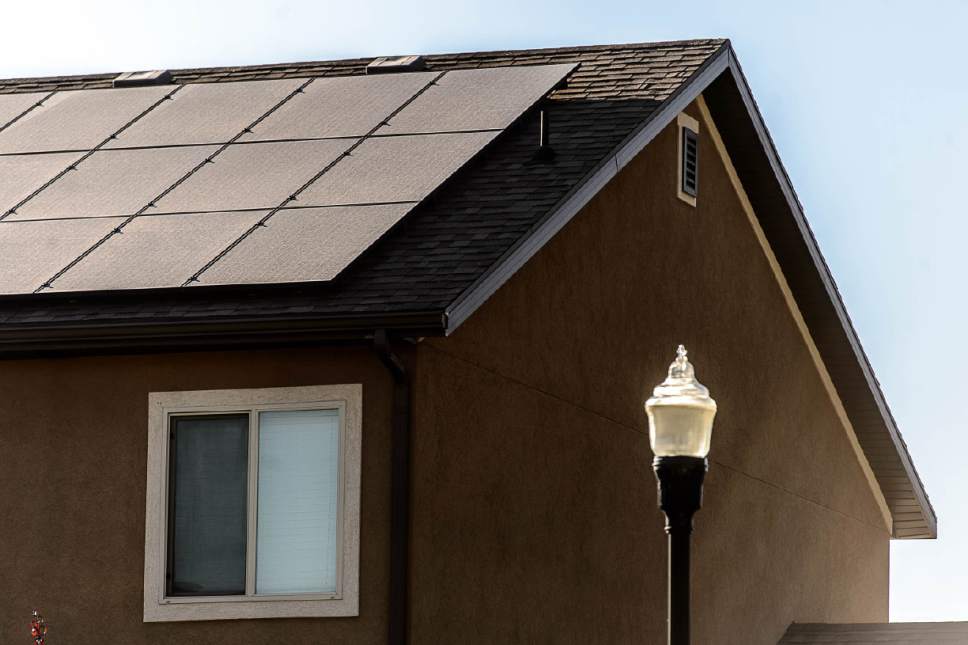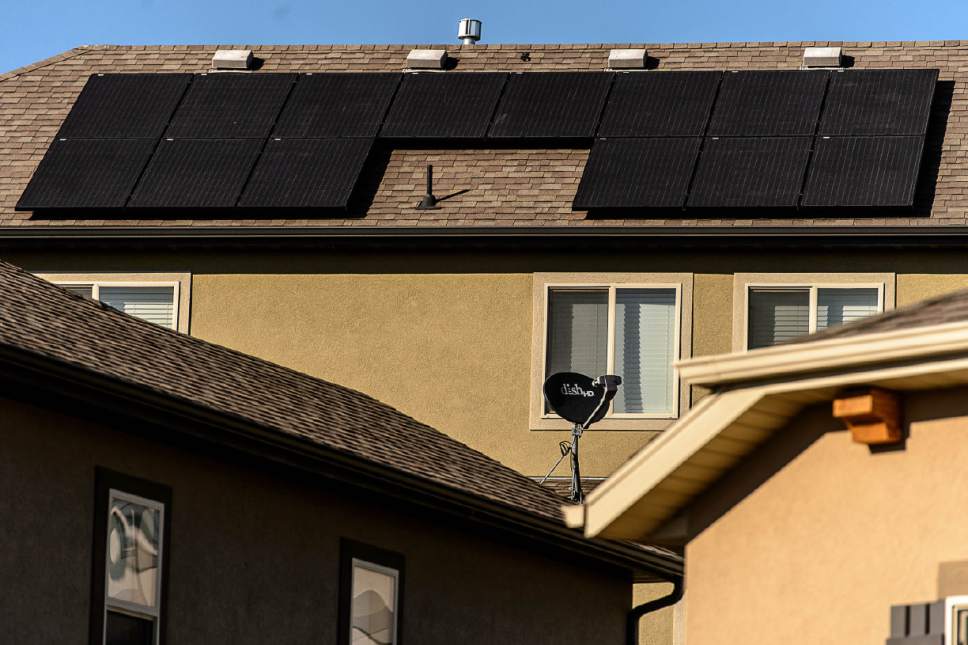This is an archived article that was published on sltrib.com in 2016, and information in the article may be outdated. It is provided only for personal research purposes and may not be reprinted.
Provo Mayor John Curtis says he intends to veto a controversial fee the Municipal Council last week approved imposing on electrical customers who have installed solar panels on their homes.
The $3-per-kilowatt Solar Generation Capacity Charge amounts to an $18 monthly surcharge on a typical solar array, which proponents say is needed to ensure "net-metered" customers pay their share of the electrical grid's many fixed costs.
But Curtis contends the fee — approved Oct. 4 on a 4-3 vote — sends the wrong message, one that could discourage residential use of solar, and needs additional work.
"It has been a difficult decision because the council was well-intentioned," Curtis said Tuesday. "It cast an aspersion on the way Provo views solar and early adopters. Those people who make that early investment paved the way for the rest of us to follow at a reduced price. We need people to continue to invest in solar."
Around the state, utilities and cities are grappling with this issue in light of rooftop solar's growth, spurred by tax incentives, rebates and the practice of net-metering — which big utilities, but not municipal power systems, are required to accommodate. Net-metered customers get to pipe their excess electricity into the grid during peak generation at mid-day, then get a unit-for-unit credit when they need to draw power.
Rocky Mountain Power, Utah's largest utility, contends this arrangement enables net-metered customers to shift the burden of fixed costs to those without solar, and has been petitioning the Utah Public Service Commission for permission to impose a surcharge on its growing ranks of solar customers.
St. George and Santa Clara were the first Utah cities to impose such a fee, but these cities partially excuse existing installations and credit the first few kilowatts. Residential systems are typically six or seven kilowatts and much of their output is consumed in the home, so it never even hits the grid. Kaysville has been crafting a fee for the past year and its city council is expected to weight alternatives at its Oct. 20 meeting.
Those three cities are members of the Utah Association of Municipal Power Systems, while Provo belongs to the six-city Utah Municipal Power Agency, whose five other members are also considering solar fees.
There is broad consensus that some kind of surcharge is in order, since solar customers still rely on the electrical grid which is funded by electrical rates. The controversy hinges on what amount is equitable considering the ability of rooftop solar to improve air quality, reduce dependence on fossil fuels and related climate-altering carbon emissions, and reduce wear and tear on the grid.
The Provo fee ignores societal benefits and was crafted with minimal public participation, said Sarah Wright, executive director of Utah Clean Energy. This group and its allies argue a rate redesign must account for public health and environmental benefits of offsetting coal-fired power, not just the cost advantages reaped by solar users.
"We are delighted that Provo will take a second look. The fundamental problem was Provo Power was prepared to impose an onerous surcharge without looking at both sides of the story," said Matt Pacenza of HEAL Utah. "It is important that any city take their time and think carefully of the overall grid and the costs and benefits of solar."
At least 27 Provo residents spoke in opposition to the fee as proposed at the council's Oct. 4 meeting, none in favor.
Jonathan Hill, a biology professor who is weighing whether to put solar on his home, told the council it was neglecting key policy implications by penalizing solar customers.
"This year is setting up to be the hottest year on record once again. Over the summer we got a quarter-inch of rain. We got nothing. We've had algae blooms and environmental impacts. To deny that our environment is not being impact by our existence here is foolish," said Hill. He calculated that every kilowatt-hour of coal-fired power that is displaced by solar results in a societal benefit worth 10 cents, about what Provo pays to subsidize solar by purchasing it from net-metered customers at a retail rate.
"It is not that the solar owners are taking all these benefits for themselves. These benefits are shared by the community. To ask the community to help subsidize this cost is not unfair," Hill said.
Others feared the fee would undermine technological innovation and make Provo a less attractive place to invest in.
Provo residents have been slow to embrace rooftop solar; half a percent of its 37,000 customers are currently net-metered. According to a Provo Power report, 162 homes were net-metered at the end of June, expected to grow to 240 by year's end.
But with dropping costs, Utah's ample availability of sunlight and solar companies aggressively selling and leasing rooftop arrays, Curtis and others expect solar use to increase at "an exponential" rate, and any rate restructure should be based on the assumption that 15 percent or more of homes will soon be solar-equipped.
The mayor proposes putting together a commission that "would recognize all the competing goals, that is preserving the grid and promoting solar. I think we can find a balance."
The council's bill authorizing the fee has not reached Curtis' desk, so he has yet to actually apply the veto. It would be his first to be made in opposition to the seven-member council in his seven years as mayor. One earlier veto came at the request of the council.
The council could override his veto, but that appears unlikely — it would require five votes, and the fee garnered only four to begin with. One of those aye votes came from a council member who welcomes Curtis' push to improve the fee.
"I recognize the challenge Mayor Curtis is having right now. I have the same challenge. I have great faith in solar. I believe it's part of our energy solutions," Gary Winterton said. "I also believe that it is not free. I am willing subsidize solar to some degree, but I am concerned that citizens will get the idea that they can tear up their electric bill by putting solar on their roof."
Brian Maffly covers public lands for The Salt Lake Tribune. Maffly can be reached at bmaffly@sltrib.com or 801-257-8713. Twitter: @brianmaffly





